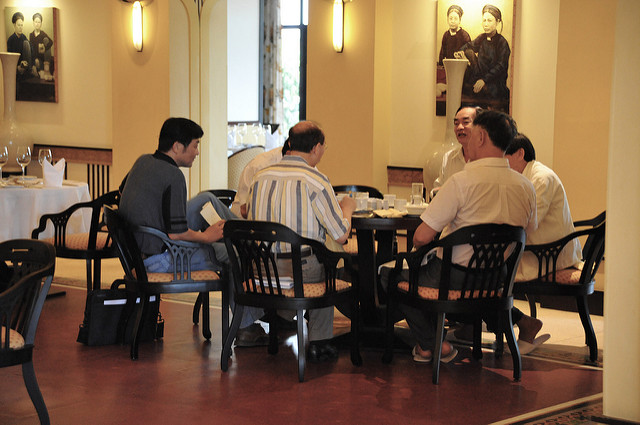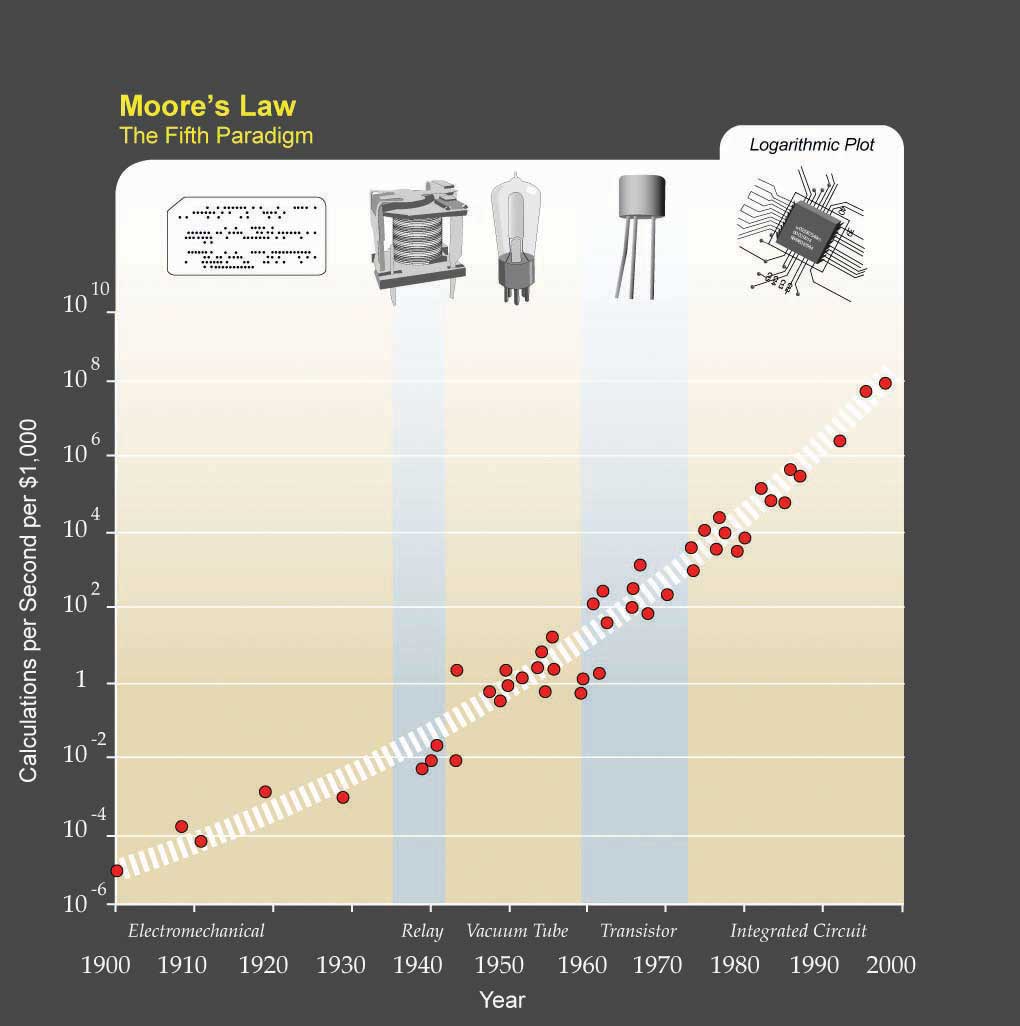Main Body
13.1 Organizational Change
Chapter 13: Managing Change
Chapter Learning Outcomes
- Identify the external forces causing change and how organizations respond to external changes.
- Explain why people resist change.
- Describe Lewin’s three-stage model of planned change.
- Describe the Kotter model of change.
- Describe how organizations may embrace continuous change.
- Identify effective change management skills and approaches.
Why Do Organizations Change?
Organizational change is the movement of an organization from one state of affairs to aother. Organizational change can take many forms. It may involve a change in a company’s structure, strategy, policies, procedures, technology, or culture. The change may be planned years in advance or may be forced upon an organization because of a shift in the environment. Organizational change can be radical and alter the way an organization operates, or it may be incremental and slowly change the way things are done. In any case, regardless of the type, change involves letting go of the old ways in which work is done and adjusting to the new ways. Therefore, fundamentally, it is a process that involves effective people management.
Workforce Demographics
Figure 13.1
Organizations change in response to changes in their environment. One of the current changes is in the demographics of the workforce.
Emilio Labrador – Business Meeting – CC BY 2.0.
Organizational change is often a response to changes in the environment. For example, both the United States Department of Labor and Organization for Economic Co-operation and Development (OECD) estimate that the age of the workforce is on the rise (Lerman & Schmidt, 2006). What does this mean for companies? Organizations may realize that as the workforce gets older the types of benefits they prefer may change. Work arrangements such as flexible work hours and job sharing may become more popular as employees remain in the workforce even after retirement. As the workforce rapidly ages, it also becomes possible that employees who are unhappy with their current work situation will choose to retire, resulting in a sudden loss of valuable knowledge and expertise on the part of organizations. Therefore, organizations will have to devise strategies to retain these employees and plan for their retirement. Finally, a critical issue is finding ways of dealing with age-related stereotypes, which act as barriers in the retention of these employees.
Technology
Sometimes change is motivated by rapid developments in technology. Moore’s law (a prediction by Gordon Moore, cofounder of Intel Corporation) dictates that the overall complexity of computer circuits will double every 18 months with no increase in cost (Moore’s Law, 2008). Such change is motivating corporations to rapidly change their technology. Sometimes technology produces such profound developments that companies struggle to adapt. A recent example is from the music industry. When CDs were first introduced in the 1980s, they were substantially more appealing than the traditional LPs. Record companies were easily able to double the prices, even though producing CDs cost a fraction of what it cost to produce LPs. For decades, record producing companies benefited from this status quo. Yet when peer-to-peer file sharing through software such as Napster and Kazaa threatened the core of their business, companies in the music industry found themselves completely unprepared for such disruptive technological changes. Their first response was to sue the users of file-sharing software, sometimes even underage kids. They also kept looking for a technology that would make it impossible to copy a CD or DVD, which has yet to emerge. Until Apple Inc.’s iTunes came up with a new way to sell music online, it was doubtful that consumers would ever be willing to pay for music that was otherwise available for free (albeit illegally so). Only time will tell if the industry will be able to adapt itself to the changes forced upon it (Lasica, 2005).
Figure 13.2
Ray Kurzweil expanded Moore’s law from integrated circuits to earlier transistors, vacuum tubes, relays, and electromechanical computers to show that his trend holds there as well.
Wikimedia Commons – public domain.
Globalization
Globalization is another threat and opportunity for organizations, depending on their ability to adapt to it. Organizations are finding that it is often cheaper to produce goods and deliver services in some countries compared to others. This led many companies to utilize manufacturing facilities overseas, with China as a popular destination. For a while, knowledge work was thought to be safe from outsourcing, but now we are also seeing many service operations moved to places with cheaper wages. For example, many companies have outsourced software development to India, with Indian companies such as Wipro Ltd. and Infosys Technologies Ltd. emerging as global giants. Given these changes, understanding how to manage a global workforce is a necessity. Many companies realize that outsourcing forces them to operate in an institutional environment that is radically different from what they are used to at home. Dealing with employee stress resulting from jobs being moved overseas, retraining the workforce, and learning to compete with a global workforce on a global scale are changes companies are trying to come to grips with.
Market Conditions
Changes in the market conditions may also create changes as companies struggle to adjust. For example, as of this writing, the airline industry in the United States is undergoing serious changes. Demand for air travel was affected after the September 11 terrorist attacks. Also, the widespread use of the Internet to book plane travels made it possible to compare airline prices much more efficiently and easily, encouraging airlines to compete primarily based on cost. This strategy seems to have backfired when coupled with the dramatic increases in the cost of fuel. As a result, airlines are cutting back on amenities that were taken for granted for decades, such as the price of a ticket including meals, beverages, and checking luggage. Some airlines, such as Delta Air Lines Inc. and Northwest Airlines Inc., have merged to deal with this climate, and talks involving other mergers in this industry continue.
How does a change in the environment create change within an organization? Note that environmental change does not automatically change how business is done. Whether or not the organization changes in response to environmental challenges and threats depends on the decision makers’ reactions to what is happening in the environment.
Organizational Growth
Figure 13.3
In 1984, brothers Kurt and Rob Widmer founded Widmer Brothers, which is now the 11th largest brewery in the United States.
Sarah McDevitt – Widmer Family Photo – CC BY 2.0.
It is natural for once small start-up companies to grow if they are successful. An example of this growth is the evolution of the Widmer Brothers Brewing Company, which started as two brothers brewing beer in their garage to become the 11th largest brewery in the United States. This growth happened over time as the popularity of their key product—Hefeweizen—grew in popularity; the company had to expand to meet demand, growing from the 2 founders to 400 employees in 2008 after Widmer Brothers merged with Redhook Ale Brewery to become Craft Brewers Alliance Inc. The newly formed company has five main departments, including Operations, Sales, Marketing, Finance, and Retail, who report to the CEO. Anheuser-Busch Companies Inc. continues to have a minority stake in both beer companies. So, while 50% of all new small businesses fail in their first year (Get ready, 2008), those that succeed often evolve into large, complex organizations over time.
Poor Performance
Change is more likely to happen if the company is performing poorly and if there is a perceived threat from the environment. In fact, poorly performing companies often find it easier to change compared to successful companies. Why? High performance actually leads to overconfidence and inertia. As a result, successful companies often keep doing what made them a success in the first place. When it comes to the relationship between company performance and organizational change, the saying “nothing fails like success” may be fitting. For example, Polaroid Corporation was the number one producer of instant films and cameras in 1994. The company filed for bankruptcy in less than a decade, unable to adapt to the rapid advances in the 1-hour photo development and digital photography technologies. Successful companies that manage to change have special practices in place to keep the organization open to changes. As a case in point, Nokia finds that it is important to periodically change the perspective of key decision makers. For this purpose, they rotate heads of businesses to different posts to give them a fresh perspective. In addition to the success of a business, change in a company’s upper level management is a motivator for change at the organization level. Research shows that long-tenured CEOs are unlikely to change their formula for success. Instead, new CEOs and new top management teams create change in a company’s culture and structure (Barnett & Carroll, 1995; Boeker, 1997; Deutschman, 2005).
Resistance to Change
Changing an organization is often essential for a company to remain competitive. Failure to change may influence the ability of a company to survive. Yet, employees do not always welcome changes in methods. According to a 2007 survey conducted by the Society for Human Resource Management (SHRM), resistance to change is one of the top two reasons why change efforts fail. In fact, reactions to organizational change may range from resistance to compliance to being an enthusiastic supporter of the change, with the latter being the exception rather than the norm (Change management, 2007; Huy, 1999).
Active resistance is the most negative reaction to a proposed change attempt. Those who engage in active resistance may sabotage the change effort and be outspoken objectors to the new procedures. In contrast, passive resistance involves being disturbed by changes without necessarily voicing these opinions. Instead, passive resisters may quietly dislike the change, feel stressed and unhappy, and even look for an alternative job without necessarily bringing their point to the attention of decision makers. Compliance, on the other hand, involves going along with proposed changes with little enthusiasm. Finally, those who show enthusiastic support are defenders of the new way and actually encourage others around them to give support to the change effort as well.
Any change attempt will have to overcome the resistance on the part of people to be successful. Otherwise, the result will be loss of time and energy as well as an inability on the part of the organization to adapt to the changes in the environment and make its operations more efficient. Resistance to change also has negative consequences for the people in question. Research shows that when people negatively react to organizational change, they experience negative emotions, use sick time more often, and are more likely to voluntarily leave the company (Fugate, Kinicki, & Prussia, 2008).
The following is a dramatic example of how resistance to change may prevent improving the status quo. Have you ever wondered why the letters on keyboards are laid out the way they are? The QWERTY keyboard, named after the first six letters in the top row, was actually engineered to slow us down. The first prototypes of the typewriter keyboard would jam if the keys right next to each other were hit at the same time. Therefore, it was important for manufacturers to slow typers down. They achieved this by putting the most commonly used letters to the left-hand side, and scattering the most frequently used letters all over the keyboard. Later, the issue of letters being stuck was resolved. In fact, an alternative to the QWERTY named the Dvorak keyboard provides a much more efficient design and allows individuals to double traditional typing speeds. Yet the shift never occurred. The reasons? Large numbers of people resisted the change. Teachers and typists resisted, because they would lose their specialized knowledge. Manufacturers resisted because of costs inherent in making the switch and the initial inefficiencies in the learning curve (Diamond, 2005). In short, the best idea does not necessarily win, and changing people requires understanding why they resist.
Figure 13.5
![Dvorak keyboard. Top row: 1! 2@ 3# 4$ 5% 6^ 7& 8* 9( 0) ][ =+ Second row: '](https://pressbooks.bccampus.ca/ob1herrmann/wp-content/uploads/sites/739/2019/05/f5f14f08b65363ebd4556279995c3249-1.jpg) P Y F G C R L /? Third row: A O E U I D H T N S -_ Bottom row: ;: Q J K X B M W V Z” width=”500″/>
P Y F G C R L /? Third row: A O E U I D H T N S -_ Bottom row: ;: Q J K X B M W V Z” width=”500″/>
The Dvorak keyboard is a more efficient design compared to the QWERTY keyboard. Due to resistance from typists, manufacturers, and teachers, it never gained widespread adoption.
Why Do People Resist Change?
Disrupted Habits
People often resist change for the simple reason that change disrupts our habits. Do you think about how you are driving when you drive? Most of the time probably not, because driving generally becomes an automated activity after a while. You may sometimes even realize that you have reached your destination without noticing the roads you used or having consciously thought about any of your body movements. Now imagine you drive for a living, and even though you are used to driving an automatic car, you are now forced to use a stick shift. You can most likely figure out how to drive a stick, but it will take time, and until you figure it out, you cannot drive on auto pilot. You will have to reconfigure your body movements and practice shifting until you become good at it. You may find that for this simple reason, people sometimes are surprisingly outspoken when confronted with simple changes such as updating to a newer version of a particular software or a change in their voice mail system.
Personality
Some people are more resistant to change than others. Research shows that people who have a positive self-concept are better at coping with change, probably because those who have high self-esteem may feel that whatever the changes are, they are likely to adjust to it well and be successful in the new system. People with a more positive self-concept and those who are more optimistic may also view change as an opportunity to shine as opposed to a threat that is overwhelming. Finally, risk tolerance is another predictor of how resistant someone will be to stress. For people who are risk avoidant, the possibility of a change in technology or structure may be more threatening (Judge et al., 1999; Wanberg & Banas, 2000).
Feelings of Uncertainty
Change inevitably brings feelings of uncertainty. You have just heard that your company is merging with another. What would be your reaction? Such change is often turbulent, and it is often unclear what is going to happen to each individual. Some positions may be eliminated. Some people may see a change in their job duties. Things can get better—or they may get worse. The feeling that the future is unclear is enough to create stress for people, because it leads to a sense of lost control (Ashford, Lee, & Bobko, 1989; Fugate, Kinicki, & Prussia, 2008).
Fear of Failure
Figure 13.6
One common reason employees resist change is the fear of failure under the new system.
Shaun Murphy – Stressed – CC BY-NC-ND 2.0.
People also resist change when they feel that their performance may be affected under the new system. People who are experts in their jobs may be less than welcoming of the changes, because they may be unsure whether their success would last under the new system. Studies show that people who feel that they can perform well under the new system are more likely to be committed to the proposed change, while those who have lower confidence in their ability to perform after changes are less committed (Herold, Fedor, & Caldwell, 2007).
Personal Impact of Change
It would be too simplistic to argue that people resist all change, regardless of its form. In fact, people tend to be more welcoming of change that is favourable to them on a personal level (such as giving them more power over others, or change that improves quality of life such as bigger and nicer offices). Research also shows that commitment to change is highest when proposed changes affect the work unit with a low impact on how individual jobs are performed (Fedor, Caldwell, & Herold, 2006).
Prevalence of Change
Any change effort should be considered within the context of all the other changes that are introduced in a company. Does the company have a history of making short-lived changes? If the company structure went from functional to product-based to geographic to matrix within the past 5 years, and the top management is in the process of going back to a functional structure again, a certain level of resistance is to be expected because people are likely to be fatigued as a result of the constant changes. Moreover, the lack of a history of successful changes may cause people to feel skeptical toward the newly planned changes. Therefore, considering the history of changes in the company is important to understanding why people resist. Also, how big is the planned change? If the company is considering a simple switch to a new computer program, such as introducing Microsoft Access for database management, the change may not be as extensive or stressful compared to a switch to an enterprise resource planning (ERP) system such as SAP or PeopleSoft, which require a significant time commitment and can fundamentally affect how business is conducted (Labianca, Gray, & Brass, 2000; Rafferty & Griffin, 2006).
Perceived Loss of Power
One other reason why people may resist change is that change may affect their power and influence in the organization. Imagine that your company moved to a more team-based structure, turning supervisors into team leaders. In the old structure, supervisors were in charge of hiring and firing all those reporting to them. Under the new system, this power is given to the team itself. Instead of monitoring the progress the team is making toward goals, the job of a team leader is to provide support and mentoring to the team in general and ensure that the team has access to all resources to be effective. Given the loss in prestige and status in the new structure, some supervisors may resist the proposed changes even if it is better for the organization to operate around teams.
In summary, there are many reasons individuals resist change, which may prevent an organization from making important changes.
Is All Resistance Bad?
Resistance to change may be a positive force in some instances. In fact, resistance to change is a valuable feedback tool that should not be ignored. Why are people resisting the proposed changes? Do they feel that the new system will not work? If so, why not? By listening to people and incorporating their suggestions into the change effort, it is possible to make a more effective change. Some of a company’s most committed employees may be the most vocal opponents of a change effort. They may fear that the organization they feel such a strong attachment to is being threatened by the planned change effort and the change will ultimately hurt the company. In contrast, people who have less loyalty to the organization may comply with the proposed changes simply because they do not care enough about the fate of the company to oppose the changes. As a result, when dealing with those who resist change, it is important to avoid blaming them for a lack of loyalty (Ford, Ford, & D’Amelio, 2008).
OB Toolbox: Life After Being Downsized
Organizational change sometimes means reducing the number of people working in the company to make operations more efficient. Sometime in your career, you may find that you go through this painful, sometimes traumatic experience. What do you do to recover in the aftermath of a downsizing?
- Be calm. This is easier said than done, but it happens to the best of us. Remember that it was not your fault. Many companies lay off employees during downsizing despite their stellar performance, so do not take it personally.
- Do not get angry. When you hear the news, make sure that you do not express your disappointment in a way that would burn your bridges. In fact, many companies rehire workers they lay off or bring them in as external consultants. Do not say or do something in anger that closes all doors. Remember, during downsizing companies are often forced to let go of employees they want to keep.
- Know your rights. Are you getting a severance package afterward? Are you going to have continued access to some benefits? Does the company provide assistance to those who are laid off? Find out what is being offered. You may also want to ask for a letter of recommendation from your former boss to help with your job hunt.
- Think about your ideal job situation. Are you in the right field? Do you have all the skills and education you need to work in the right field? Some people will look at a layoff as a time to settle for any job that comes along, but this may not be an effective long-term strategy. Instead, imagine your ideal situation and find out what you can do to get there.
- Get help. There are many organizations and career coaches offering career support, advice, and networking opportunities. Surround yourself with positive people who are supportive. Getting assistance may help you make yourself more marketable or simply provide you with necessary emotional support.
- Polish your resume and job hunting skills. You may benefit from someone else proofreading your resume and practicing interviews with you.
- Do not give up! You found a job once, you will find it again. Stay positive, be patient, and do not lose hope.
Sources: Based on information in How to maximize your take when you get laid off. (2008, November). Money, 37(11), 132; Kamberg, M. L. (2000, May–June). Surviving the ups & downs of corporate restructuring. Women in Business, 52(3). Palmer, K. (2008, March 24). Re-energizing your career. U.S. News & World Report, 144(9). Weinstein, B. (2008, September 29). Downsizing 102: When it happens to you. Business Week Online. Retrieved on October 25, 2008, from http://www.businessweek.com/managing/content/sep2008/ca20080926_140228.htm.






